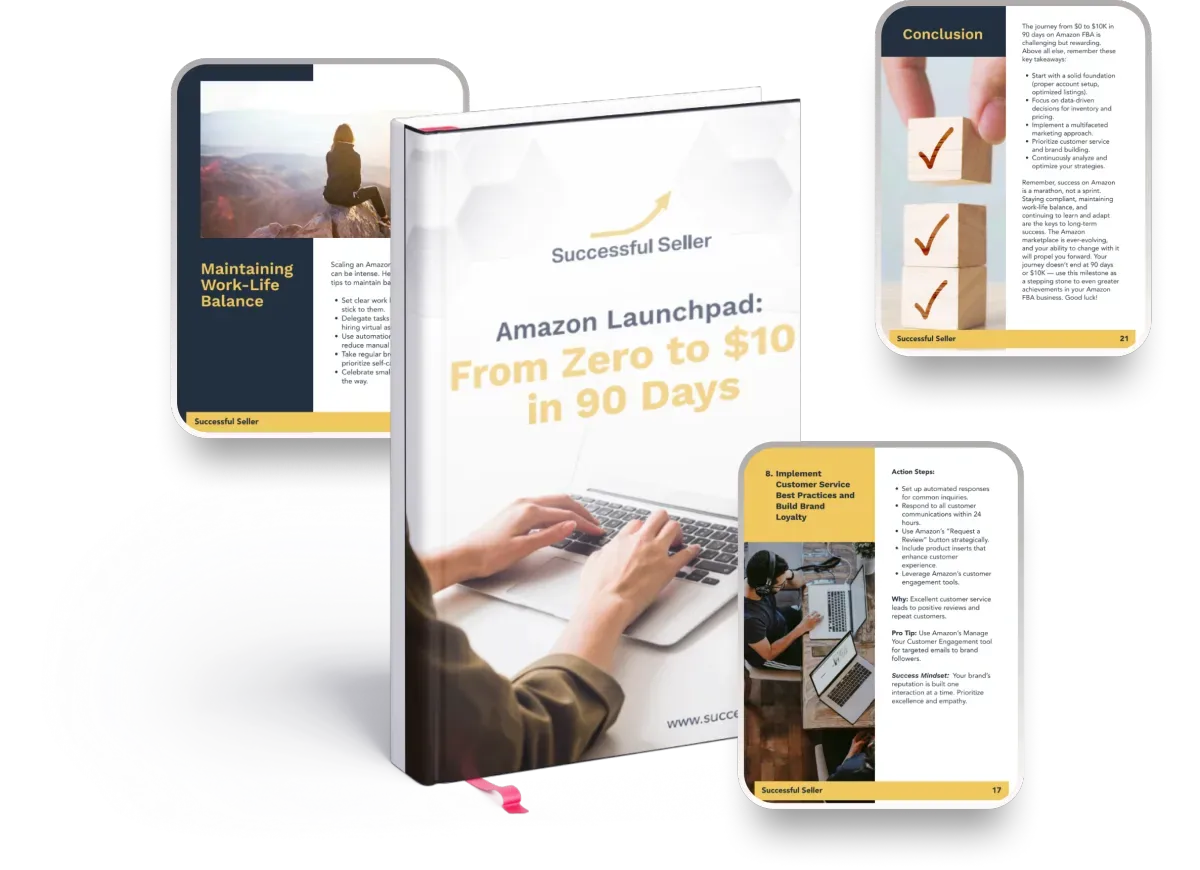
Our Articles
Home • Articles
Mastering Amazon SEO in 2025: The Definitive Guide for Serious Sellers

The latest data reveals that Amazon’s A10 algorithm has evolved significantly in 2025, prioritizing organic engagement, external traffic, and comprehensive seller metrics more than ever before. After analyzing the most current research and best practices, this guide presents cutting-edge strategies to dominate Amazon’s search rankings and drive substantial sales growth for your business.
Understanding Amazon’s A10 Algorithm in 2025
Amazon’s search engine operates fundamentally differently from Google, with a singular focus on connecting buyers with products they’re most likely to purchase. Unlike general search engines where users seek information or inspiration, Amazon users typically have transactional intent—they’re ready to buy. This makes mastering Amazon SEO critical for visibility and sales.
The A10 algorithm, which replaced the older A9 system, has shifted ranking factors to prioritize organic engagement and external traffic over paid advertising alone. What’s particularly important in 2025 is that Amazon now evaluates products based on relevance to search queries, buyer intent, and seller authority more heavily than before. This represents a significant evolution from earlier versions that primarily weighted sales velocity and sponsored placements.
According to recent data from over 500 seller accounts, the key ranking factors influencing Amazon search results in 2025 include:
PPC Sales - Still a major driver of rankings, with Amazon continuing to prioritize paid placements.
Organic Sales - Impact has significantly increased, showing that natural purchases now play a larger role in ranking improvements.
External Traffic - Amazon now heavily rewards products that drive visitors from outside sources like Google, social media, and influencers.
Seller Authority - Your reputation, feedback scores, and return rates directly impact visibility.
Customer Engagement Metrics - Time on page, review quality, and user interactions now influence rankings
The shift in emphasis means that simply pumping money into PPC ads is no longer sufficient for sustainable ranking success. Instead, the algorithm rewards sellers who create a holistic strategy combining quality listings, external traffic, and excellent seller performance metrics.
The Critical Role of Indexing and Relevance
Indexing remains the foundation of Amazon SEO, similar to traditional search engines. Without proper indexing, your products simply won’t appear in relevant searches. However, the strategy has evolved from trying to index for as many terms as possible to a more focused approach targeting highly relevant keywords based on your niche, budget, and search volume potential.The key components of Amazon’s indexing system include your title, bullet points, description, and backend search terms. Your title should feature your most important keywords while remaining clear and compelling—avoiding keyword stuffing while incorporating valuable search terms. Although Amazon officially advises brevity, testing shows that longer, descriptive, and keyword-rich bullet points tend to convert better. This creates a balancing act between informative content and search optimization.
Advanced Keyword Research Strategies for 2025
In 2025’s competitive landscape, basic keyword research won’t suffice. You need sophisticated strategies to uncover high-converting keywords your competitors might miss.
Leveraging AI-Powered Tools
The latest AI-powered tools like Helium10’s Magnet 2.0 or Jungle Scout’s Keyword Scout now analyze customer behavior patterns to predict emerging keyword trends. These tools provide deeper insights than ever before, allowing you to stay ahead of market shifts. One particularly effective approach is reverse ASIN keyword lookup—researching keywords that your competitors’ products already rank for. This allows you to reverse-engineer their SEO strategy and identify valuable long-tail keywords. Start by searching for a broad but relevant keyword that describes your product, see which products show up in the Amazon search results, copy their ASINs, and then research which keywords these ASINs rank for.Understanding the distinction between short and long-tail keywords is crucial. Short, broad terms like “pillow” or “backpack” typically have high search volume but aren’t very focused. When someone searches for “backpack,” they could be looking for many different types of products. Long-tail keywords, while having lower search volume, tend to convert better because they match specific buyer intent.
Voice Search Optimization
With the proliferation of Alexa-enabled devices, voice search has become increasingly important on Amazon. Include natural language phrases in your keyword strategy that reflect how people actually speak when using voice commands. For example, instead of just optimizing for “waterproof speaker,” consider phrases like “Alexa, find me a waterproof speaker for my shower.”
Listing Optimization: The Science of Conversion
Now that you have your keyword strategy, it’s time to craft a listing that converts browsers into buyers through strategic optimization of every element.
Title Optimization Strategy
Your title should front-load your most important keywords while remaining readable and compelling. In 2025, the optimal title formula includes your Brand + Model Number + Product Type + 3-5 Key Features, all within Amazon’s character limit. For example: “TechPro X200 Bluetooth Speaker - Waterproof, 24-Hour Battery, Crystal Clear Sound, Alexa-Enabled.”This structure places your most critical keywords early in the title where they carry more weight with the algorithm while still creating a title that makes sense to human readers. Remember that titles often serve as primary advertising copy, so they should be keyword-rich yet optimized for conversion.
Bullet Point Mastery
Use all five bullet points, with each focusing on a unique selling proposition. The most effective structure starts each bullet with a benefit, followed by the feature that provides it, incorporating secondary keywords naturally throughout.For example: “SHOWER SING-ALONG READY: IPX7 waterproof rating means you can belt out tunes in the shower or by the pool without worry.”This approach addresses the customer’s needs first (the benefit) before explaining how your product meets that need (the feature). Testing shows that longer, descriptive, and keyword-rich bullet points tend to convert better despite Amazon’s official recommendation for brevity.
Backend Search Terms Optimization
Backend search terms remain a critical component of Amazon SEO in 2025, giving you 250 bytes to include terms that might not fit naturally in your visible listing. Use this space strategically to include:
Misspellings of your primary keywords
Related search terms and synonyms
Terms already used in your front-end listing should be avoided (they don’t need to be repeated)
A pro tip is to use Amazon’s “Search Terms Report” to identify actual customer search queries that are bringing traffic to your listings, then incorporate these exact terms in your backend keywords.
The Power of A+ Content for Conversion
A+ Content (formerly Enhanced Brand Content) is no longer optional in 2025 for brands serious about conversion. Recent data shows that well-executed A+ Content can increase conversion rates by up to 10%.
Mobile-First Design
With over 70% of Amazon purchases now made on mobile devices, designing your A+ Content for mobile-first viewing is essential. Use a mix of text and images that display clearly on smaller screens, ensuring that key information is visible without excessive scrolling or zooming.Comparison charts have proven particularly effective in A+ Content, allowing customers to easily compare your product variants or see how your product stacks up against competitors. This reduces purchase hesitation by clearly highlighting your unique selling points.
Driving External Traffic: The 2025 Ranking Booster
One of the most significant shifts in Amazon’s A10 algorithm is the increased value placed on external traffic. Amazon now prioritizes products that bring traffic from outside its platform, making this a powerful ranking lever.
Multi-Channel Marketing Strategy
Develop a comprehensive external traffic strategy including:
Social Media Marketing - Platforms like TikTok and Instagram are particularly effective for creating viral product showcases. The visual nature of these platforms aligns perfectly with product promotion.
Influencer Partnerships - Micro-influencers in your niche often provide better ROI than celebrities, offering authentic product promotions to engaged audiences. Amazon’s Influencer Program allows you to create custom storefronts for your partners.
Content Marketing - Creating valuable content through blogs or YouTube channels addressing common questions in your product category establishes authority and drives qualified traffic. Use Amazon Attribution links to track the performance of these efforts.
Email Marketing - Building an email list through product inserts or external landing pages provides a direct channel to announce new products, deals, and valuable content to customers already interested in your brand.
Amazon’s tracking systems now recognize and reward this external traffic, giving products that consistently bring in outside visitors a significant ranking boost compared to those relying solely on internal Amazon traffic.
Seller Authority and Reputation Management
Seller authority has become a major ranking factor in the A10 algorithm. Amazon evaluates sellers based on their overall performance, with high-performing sellers receiving better visibility in search results.
To improve your seller authority:
Maintain high feedback scores (above 95%) and keep order defect rates low
Encourage more reviews through excellent customer service and follow-up communications
Offer reliable shipping and prompt customer support
The algorithm treats seller authority as a sign of trustworthiness, pushing products from proven sellers higher in search results. This means that maintaining excellent account health is now directly tied to your SEO performance.
Final Thoughts: Staying Ahead in 2025
Amazon SEO in 2025 requires a comprehensive approach that goes beyond basic keyword optimization. Success comes from understanding the nuances of the A10 algorithm and creating a strategy that combines:
Strategic keyword research and implementation
Compelling, conversion-focused listings
External traffic generation
Strong seller metrics and reputation
Continuous testing and optimization
By implementing these advanced strategies, you’ll position your products to dominate Amazon search results and capitalize on the platform’s massive customer base. Remember that Amazon SEO is not static—continue testing, learning, and adapting as the algorithm evolves.

Free Amazon Road Map: Your Path to $10K in Monthly Sales in 90 Days
Discover the proven, step-by-step system that’s helped hundreds of sellers achieve $10K+ months on Amazon — even if you’re starting from scratch or struggling to scale your existing store.

About Us
Successful Seller exists to help you scale your Amazon Business. Founded in 2017 in the UK and Canada, we've helped dozens of companies, big and small, to grow their brands to six, seven and eight figures.
Know Our ProductsStay in the Loop!
Get Personalized Tips on How To Grow Your FBA BusinessJoin thousands of FBA Brands who are receiving the cutting-edge tips, tricks, and examples that show you how to grow your FBA Store.
